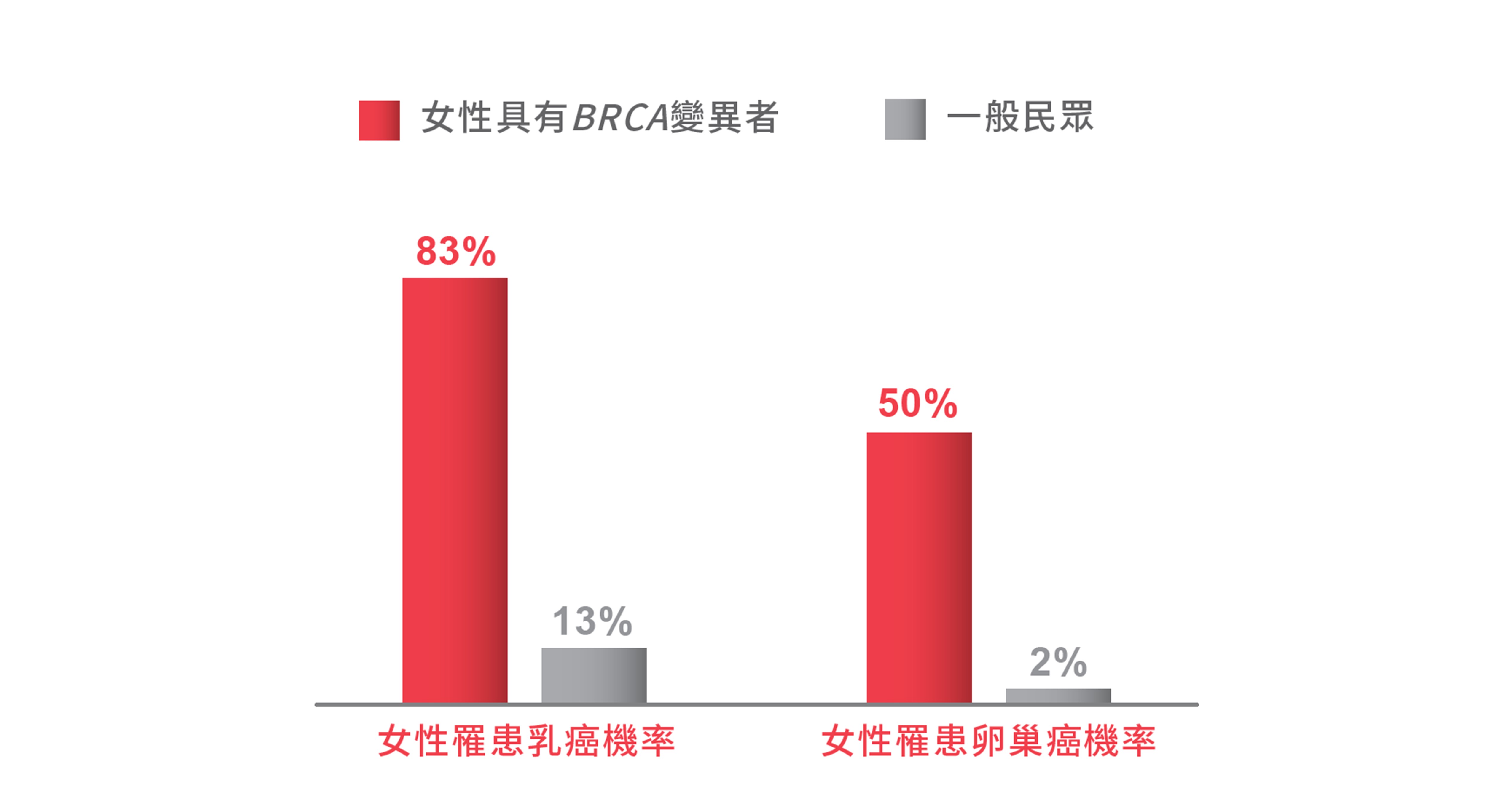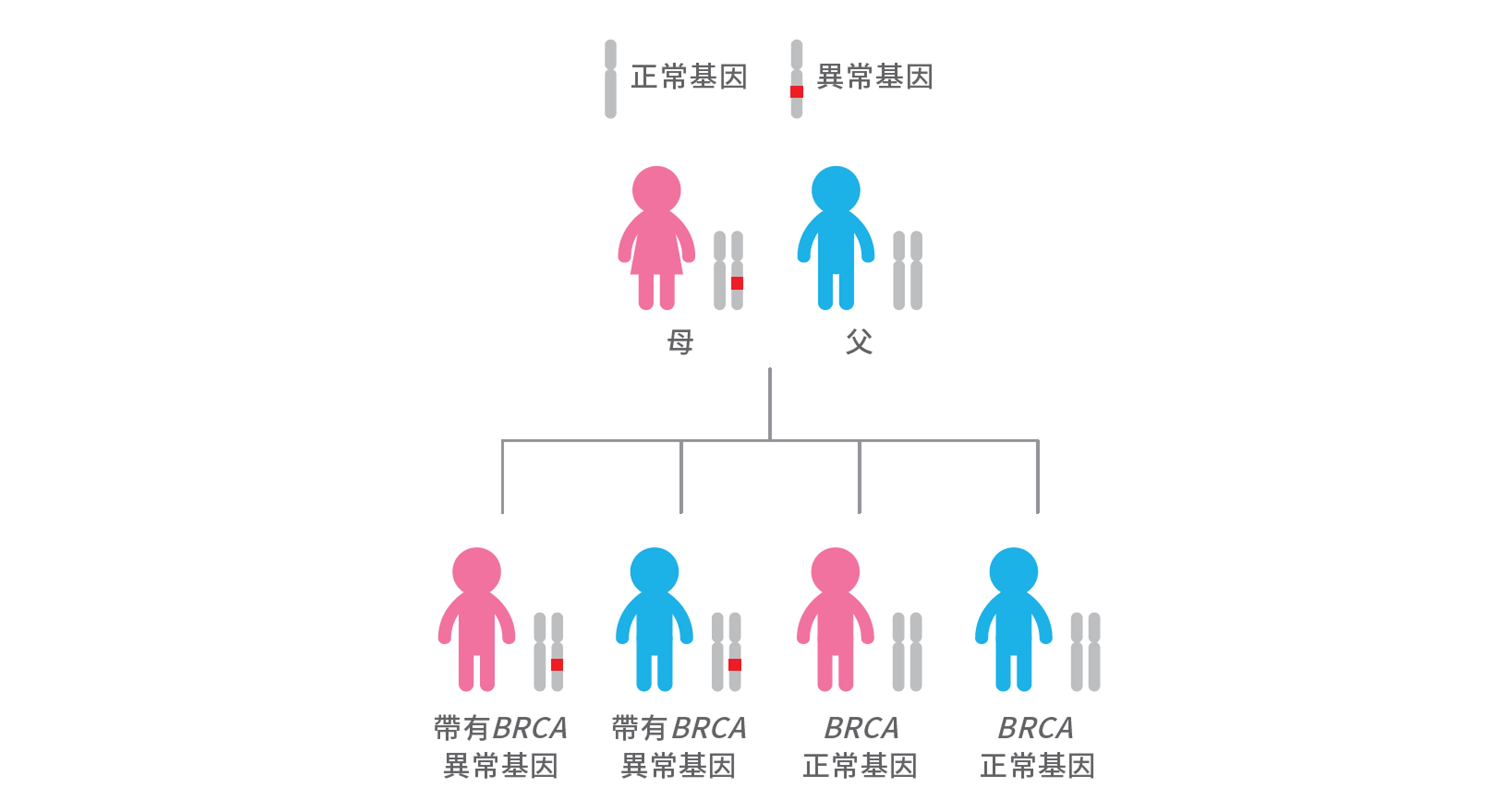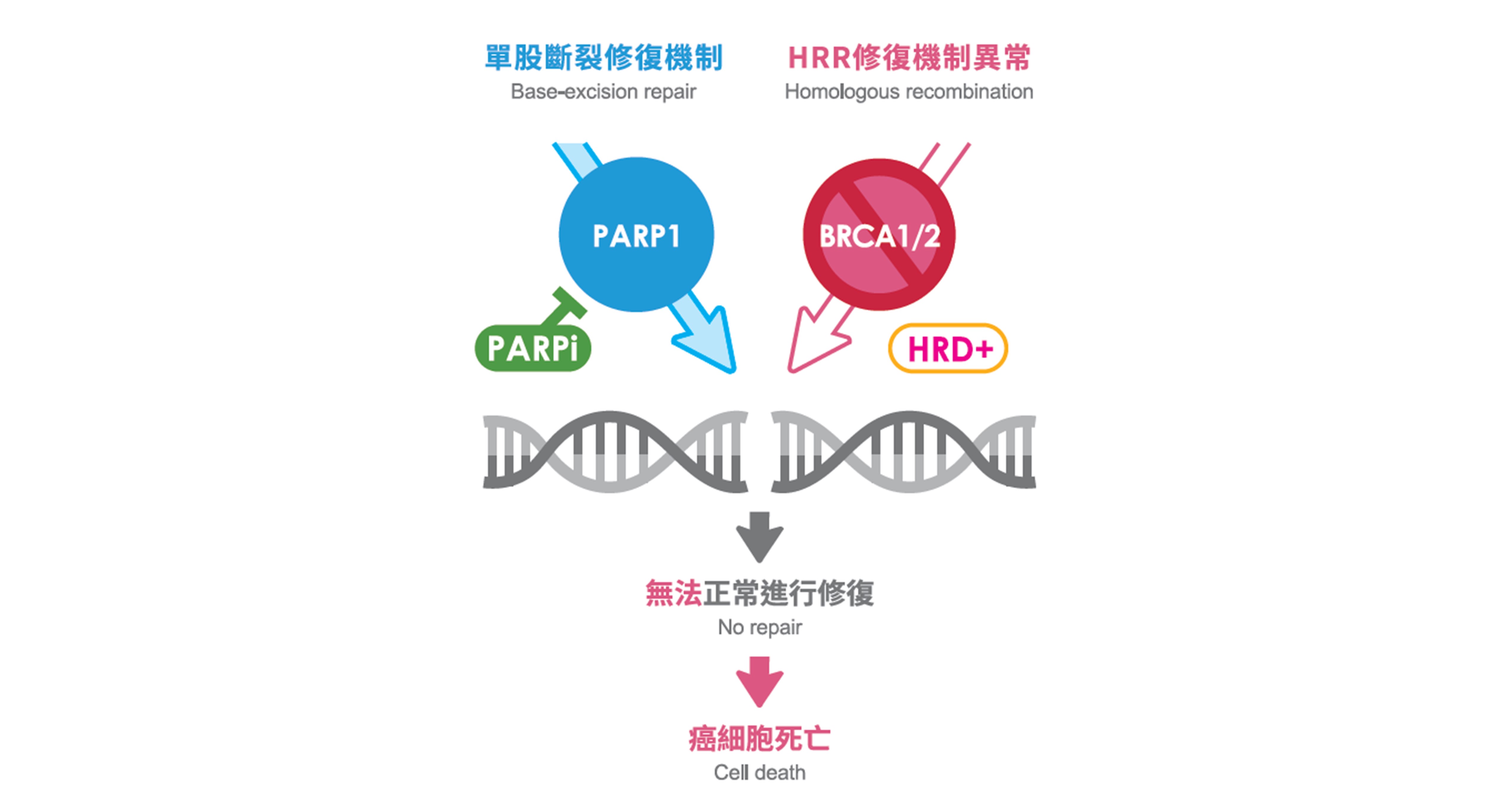👑慧智癌風險-BRCA1/2基因檢測
服務介紹
■ 慧智BRCA1/2與罹癌風險
科學家在1990年代先後發現BRCA1、BRCA2基因。這兩個基因屬於抑癌基因( tumor-suppressor gene),負責雙股DNA損壞的修復機轉,若這兩個基因其中之一發生缺陷,雙股DNA斷裂後無法正確修復,而當這些DNA壞損累積到一定程度,細胞就可能發生癌變。因此先天帶有BRCA1/2基因變異會增加罹癌風險,罹患乳癌以及其他癌症(ex. 卵巢癌、子宮內膜癌、攝護腺癌、胰臟癌)的比例會比一般人更高。因此,接受BRCA 1/2基因檢測生殖細胞中是否帶有BRCA1/2基因變異,可得知罹病風險,以採取積極醫療監控與預防措施。

HRR是一種雙股DNA斷裂修復機制,當細胞中的DNA受到損傷時,透過HRR可將DNA修復為正常。慧智癌風險-BRCA1/2基因檢測可以分析癌細胞是否帶有BRCA1/2的致病性突變,當發生突變代表癌細胞可能發生HRR修復機制異常,只剩下單股斷裂的修復機制。對於這些患者來說,目前最新的治療方式為口服標靶藥物 -- PARP 抑制劑,其透過干擾癌細胞內單股斷裂的修復機制使癌細胞死亡。
檢測說明
BRCA 1/2基因變異屬顯性遺傳,子女有50%機會得到異常基因,當得到遺傳性突變,則罹癌機率提高。

適用對象
健康人--罹癌風險評估:
◆ 家族中罹患遺傳性癌症人數在兩人以上◆ 近親中被診斷出早發性遺傳性癌症(50歲以下)◆ 罹患兩種以上原發癌,但沒有家族病史的罹癌患者
癌症病患--用藥選擇:
◆ 三陰性乳癌、卵巢癌/輸卵管癌/原發性腹膜癌、攝護腺癌、胰臟癌患者
◆ 欲申請健保給付PARP抑制劑之患者
檢測流程
慧智優勢



